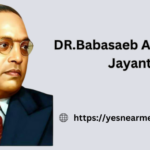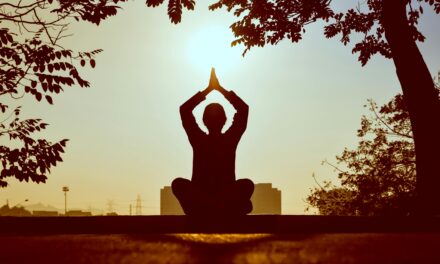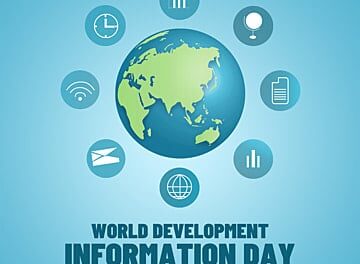“Mahaparinirvan Divas” (महापरिनिर्वाण दिवस)
“Mahaparinirvan Divas” (महापरिनिर्वाण दिवस) is a significant day observed to honor the death anniversary of Dr. B. R. Ambedkar, who passed away on December 6, 1956. On this day, his followers and many others gather at the Chaitya Bhoomi in Mumbai, where his final rites were performed, to pay tribute to his legacy.
Chaitya Bhoomi is a revered site in Mumbai, Maharashtra, and it holds great significance for followers of Dr. B. R. Ambedkar. Here are some key details:
1. Location:
- Chaitya Bhoomi is located in Dadar, Mumbai, near the Dadar Chowpatty. It is a major pilgrimage site for Dr. Ambedkar’s followers, primarily from the Dalit community.
2. Significance:
- It is the site where Dr. B. R. Ambedkar, the architect of the Indian Constitution and a champion of social justice, was cremated on December 6, 1956.
- The day of his death, December 6, is observed as Mahaparinirvan Divas (Ambedkar’s Death Anniversary) each year, with large gatherings and memorial services taking place at Chaitya Bhoomi.
3. Ambedkar’s Legacy:
- Dr. Ambedkar was a prominent social reformer, lawyer, and politician who fought for the rights of the marginalized communities in India, especially the Dalits. He is also recognized for his role in abolishing untouchability and advocating for the upliftment of the oppressed sections of society.
4. Memorial and Structure:
- Chaitya Bhoomi has a memorial dedicated to Dr. Ambedkar, with a grand statue of Ambedkar at the center.
- The memorial also features an eternal flame to honor Ambedkar’s contributions.
- The stupa at Chaitya Bhoomi is built in a traditional Buddhist architectural style, signifying Dr. Ambedkar’s conversion to Buddhism shortly before his death.
5. Annual Observances:
- Thousands of people, especially from Dalit communities, visit Chaitya Bhoomi every year on December 6 to pay tribute to Dr. Ambedkar. The place is also visited on his birth anniversary, April 14.
- Ambedkar Jayanti (April 14) sees large-scale celebrations and processions, with people coming from across the country to honor his legacy.
6. Cultural and Political Importance:
- Chaitya Bhoomi is not only a religious site but also a political symbol. It represents the ongoing struggle for equality, justice, and rights for Dalits and marginalized communities.
- It’s a place where social and political leaders, along with ordinary people, gather to remember Dr. Ambedkar’s work and to discuss his vision of a more inclusive society.
Chaitya Bhoomi is a revered site in Mumbai, Maharashtra, and it holds great significance for followers of Dr. B. R. Ambedkar. Here are some key details:
1. Location:
- Chaitya Bhoomi is located in Dadar, Mumbai, near the Dadar Chowpatty. It is a major pilgrimage site for Dr. Ambedkar’s followers, primarily from the Dalit community.
2. Significance:
- It is the site where Dr. B. R. Ambedkar, the architect of the Indian Constitution and a champion of social justice, was cremated on December 6, 1956.
- Each year, the day of his death, December 6, is observed as Mahaparinirvan Divas (Ambedkar’s Death Anniversary), with large gatherings and memorial services taking place at Chaitya Bhoomi.
3. Ambedkar’s Legacy:
- Dr. Ambedkar was a prominent social reformer, lawyer, and politician who fought for the rights of the marginalized communities in India, especially the Dalits. He is also recognized for his role in abolishing untouchability and advocating for the upliftment of the oppressed sections of society.
4. Memorial and Structure:
- Chaitya Bhoomi has a memorial dedicated to Dr. Ambedkar, with a grand statue of Ambedkar at the center.
- The memorial also features an eternal flame to honor Ambedkar’s contributions.
- The stupa at Chaitya Bhoomi is built in a traditional Buddhist architectural style, signifying Dr. Ambedkar’s conversion to Buddhism shortly before his death.
5. Annual Observances:
- Thousands of people, especially from Dalit communities, visit Chaitya Bhoomi every year on December 6 to pay tribute to Dr. Ambedkar. The place is also visited on his birth anniversary, April 14.
- Ambedkar Jayanti (April 14) sees large-scale celebrations and processions, with people coming from across the country to honor his legacy.
6. Cultural and Political Importance:
- Chaitya Bhoomi is not only a religious site but also a political symbol. It represents the ongoing struggle for equality, justice, and rights for Dalits and marginalized communities.
- It’s a place where social and political leaders, along with ordinary people, gather to remember Dr. Ambedkar’s work and to discuss his vision of a more inclusive society.
Mahaparinirvan Divas (महापरिनिर्वाण दिवस) is observed on December 6 each year to commemorate the death anniversary of Dr. B. R. Ambedkar, the principal architect of the Indian Constitution and a tireless advocate for social justice and the rights of the oppressed, particularly the Dalits.
Here are the key points about Mahaparinirvan Divas:
1. Significance of the Day:
- Mahaparinirvan Divas marks the day Dr. B. R. Ambedkar died on December 6, 1956, in Delhi. His death is seen as a great loss for the country, but also as the culmination of his lifelong efforts to uplift the marginalized and to fight against social evils like untouchability, caste-based discrimination, and inequality.
- The term “Mahaparinirvan“ refers to the Buddhist concept of Nirvana, meaning the ultimate liberation or enlightenment. Dr. Ambedkar, having converted to Buddhism in 1956, is often referred to as having attained “Mahaparinirvan” on this day.
2. Tribute to Ambedkar’s Legacy:
- On Mahaparinirvan Divas, Dr. Ambedkar’s followers, particularly from Dalit communities, pay homage to him by visiting Chaitya Bhoomi in Mumbai, where his last rites were performed. The site is considered sacred and is a place of pilgrimage for his followers.
- The day is a time for reflection on Dr. Ambedkar’s vision of equality, social justice, and the fight for the rights of the oppressed. It is a reminder of the importance of Dr. Ambedkar’s contributions to modern India, especially in his role as the principal architect of the Indian Constitution, which enshrines equality and rights for all citizens.
3. Observances and Ceremonies:
- Candlelight Processions: On December 6, candlelight processions are held in different parts of India to honor Dr. Ambedkar. These processions often culminate at significant sites, including Chaitya Bhoomi.
- Public Gatherings and Speeches: Various social organizations, political groups, and educational institutions organize public events where speakers highlight Dr. Ambedkar’s contributions, life, and values.
- Pujas and Prayers: At Chaitya Bhoomi, special ceremonies, prayers, and pujas are conducted to mark the day. This is a moment for people to reflect on the values Dr. Ambedkar stood for and renew their commitment to social equality.
4. Impact on Social Movements:
- The observance of Mahaparinirvan Divas is not only a tribute but also an occasion for Dalit empowerment. It is an opportunity for people to gather and discuss the ongoing struggles for equality and justice in India, as well as to reflect on the progress made since Dr. Ambedkar’s time.
- The day serves as a reminder of the social issues that persist and the need to continue Dr. Ambedkar’s work toward the eradication of untouchability, caste discrimination, and inequality in society.
5. National Importance:
- Mahaparinirvan Divas has become a national day of remembrance, especially among the Dalit and Buddhist communities, but it is observed by people from various walks of life. The day is marked with respect and reverence, as Dr. Ambedkar is recognized as a foundational figure in shaping modern India.
In summary, Mahaparinirvan Divas is a solemn occasion to honor Dr. B. R. Ambedkar’s memory, his fight for social justice, and his role in establishing the framework for an egalitarian India. It is a day that reaffirms the commitment to his vision and to fighting for the rights of marginalized communities.
Dr. Bhimrao Ramji Ambedkar, popularly known as Babasaheb Ambedkar, was an influential Indian social reformer, politician, economist, and the chief architect of the Indian Constitution. He played a pivotal role in the upliftment of the Dalit community (formerly known as “untouchables”) and in the fight against social inequality and caste discrimination. Here’s an in-depth look at his life and contributions:
1. Early Life and Education:
- Born: April 14, 1891, in Mhow, Madhya Pradesh (then part of the Central Provinces of British India).
- Family Background: Dr. Ambedkar was born into a Dalit (Untouchable) family. His father, Ramji Maloji Sakpal, was a soldier in the British Army. Ambedkar faced extreme discrimination due to his caste, even in school, where he was denied water and treated as inferior by his classmates and teachers.
- Education: Despite numerous hardships, Ambedkar was an exceptional student. He received his early education in India and later went to Columbia University in the United States, where he earned a Master’s degree in Economics and a Doctorate in Economics.
- He also studied at the London School of Economics and qualified as a Bar-at-Law from Gray’s Inn, London, becoming one of the few Indian lawyers to have studied abroad at the time.
2. Fight Against Caste Discrimination:
- Untouchability: Ambedkar grew up experiencing the oppressive realities of untouchability. He realized that the caste system in India created deep social divides, with Dalits being relegated to the lowest positions in society and subjected to exploitation and violence.
- Social Reform: Ambedkar dedicated his life to fighting for the rights of the Dalits and marginalized communities. He initiated movements to demand equal rights, social justice, and better opportunities for education and employment for the Dalit community.
- Mahad Satyagraha (1927): One of Ambedkar’s key early movements was the Mahad Satyagraha, where he led a protest against the social exclusion of Dalits from public water tanks in the town of Mahad. The protest was a symbolic act against untouchability and caste-based discrimination.
3. Role in Indian Politics:
- Indian National Congress: Dr. Ambedkar initially worked with the Indian National Congress (INC), led by Mahatma Gandhi, but later grew disillusioned with their approach to addressing the rights of Dalits and the marginalized. His differences with Congress led him to form his path.
- Depressed Classes: Ambedkar was the leader of the Depressed Classes (Dalits), advocating for their political rights. In 1930, he organized the Dalit Shoshit Samaj Sangharsh Samiti (Depressed Classes’ Struggle Committee) to fight for equality.
- Poona Pact (1932): In 1932, when British authorities proposed separate electorates for Dalits (which Ambedkar supported), Mahatma Gandhi opposed it, leading to a fast unto death. The dispute was resolved through the Poona Pact, where it was agreed that Dalits would have reserved seats in the legislature but not separate electorates. This was a major milestone in the political empowerment of Dalits.
4. Contribution to the Indian Constitution:
- Constitution Drafting: Dr. Ambedkar was appointed as the Chairman of the Drafting Committee of the Constituent Assembly in 1947. He played a leading role in drafting the Constitution of India, ensuring that it included provisions for fundamental rights, equality before the law, and abolition of untouchability.
- Vision for Equality: Ambedkar’s contribution to the Constitution laid down a legal framework for ensuring equality and protection for all citizens, especially marginalized groups like Dalits, women, and religious minorities. His efforts were instrumental in making Article 17 of the Constitution, which abolished untouchability, a law of the land.
5. Conversion to Buddhism:
- Conversion: Dr. Ambedkar converted to Buddhism along with thousands of his followers on October 14, 1956, in a ceremony at Nagpur. He chose Buddhism because it rejected the caste system, embraced equality, and offered a path to social justice. His conversion to Buddhism was symbolic of his rejection of the Hindu caste system and his desire to provide an alternative, more inclusive spiritual framework for the oppressed.
- His conversion was a turning point, as it led to the Buddhist conversion movement among Dalits, which continues to this day.
6. Personal Life and Legacy:
- Marriage and Family: Ambedkar married Ramabai, a woman from a low-caste family. Their union was also a progressive act, as it challenged traditional caste-based marital norms.
- Death: Dr. Ambedkar passed away on December 6, 1956, just a few weeks after converting to Buddhism. His death marked the end of an era in India’s fight for social justice and equality, but his legacy continued to inspire future generations.
7. Dr. Ambedkar’s Legacy:
- Social Justice: Dr. Ambedkar’s work laid the foundation for India’s modern social justice movements, and his impact on the fight for equality is still seen today in the various policies for affirmative action and caste-based reservations in education and employment.
- Memorials and Tributes: Dr. Ambedkar’s birth anniversary, April 14, is celebrated as Ambedkar Jayanti nationwide. His death anniversary, December 6 (Mahaparinirvan Divas), is also widely observed, especially at Chaitya Bhoomi in Mumbai.
- Books and Works: Ambedkar was an author of many influential works, including “The Problem of the Rupee“ (on Indian currency), “Thoughts on the Linguistic States“, and his famous work “The Annihilation of Caste“, in which he strongly criticized the caste system and its effects on society.
- Dr. Babasaheb Ambedkar Jayanti







Recent Comments